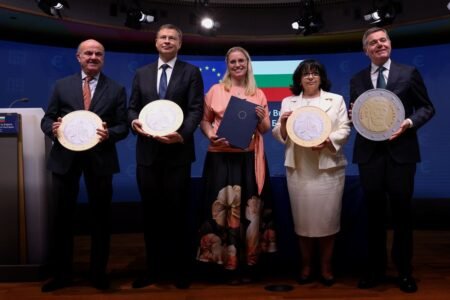(BRUSSELS) – GDP per capita of less developed regions in the EU is expected to increase by up to 5% by 2023, as regional disparities narrow as a result of its cohesion policy, an EU report said on Wednesday.
The 8th Cohesion Report published by the Commission finds that the EU’s cohesion funding supported a 3.5% reduction in the gap between the GDP per capita of the 10% least developed regions and the 10% most developed regions.
“The 8th Cohesion Report clearly shows the importance of Cohesion policy in fostering convergence and reducing inequalities between countries and regions in the EU,” said Cohesion Commissioner Commissioner Elisa Ferreira: “By mapping the areas where Member States and regions need to do more and better, the report allows us to learn from the lessons of the past to be better prepared for the challenges of the future.”
She added that adoption of cohesion policy programmes for 2021-2027 needed to accelerate “so that we can continue supporting regions in recovering from the pandemic, reap the full benefits of the transition to a green and digital Europe and deliver on long term growth.”
The report underlined the importance of the EU’s flexible cohesion policy in the midst of economic slowdowns and the worst crisis of recent times.
Additional main findings
- Cohesion policy became a more important source of investment. Cohesion funding grew from the equivalent of 34% to 52% of total public investment from the 2007-2013 programming period to the 2014-2020 programming period.
- Since 2001, less developed regions in Eastern Europe have been catching up with the rest of the EU. At the same time however, many middle-income and less developed regions, especially in the southern and south-western EU, have suffered from economic stagnation or decline.
- Convergence between Member States has accelerated, but internal regional disparities within the fast-growing Member States have increased.
- Employment has been growing, but regional disparities remain larger than before 2008.
- The number of people at risk of poverty and social exclusion fell by 17 million between 2012 and 2019.
- The regional innovation divide in Europe has grown, due to a lack of investment in R&D and weaknesses in innovation ecosystems of least developed regions.
- The EU population is ageing and will start shrinking in the years to come. In 2020, 34% of the EU population lived in a shrinking region. This is projected to reach 51% in 2040.
Communication on the 8th Cohesion Report: Cohesion in Europe towards 2050
The 8th Cohesion Report (all documents and maps)
8th Cohesion Report - background guide








